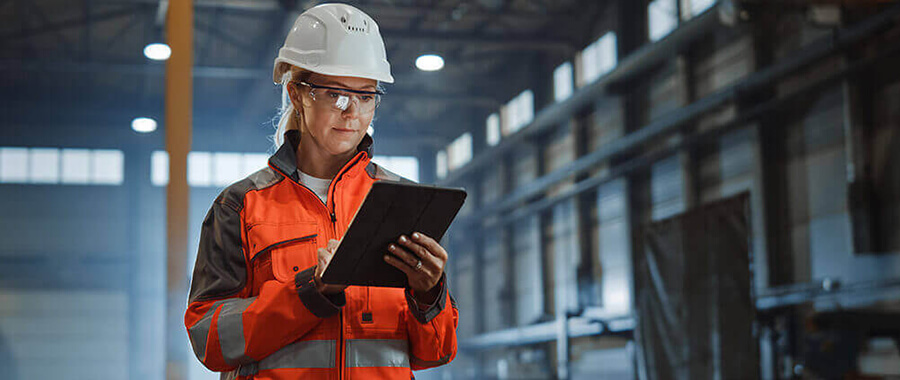How Technology Is Transforming Safety Audits in 2024
How Technology Is Transforming Safety Audits in 2024
Blog Article
Introduction
Safety audits play a critical role in ensuring workplace safety, regulatory compliance, and risk management. With rapid advancements in technology, traditional safety audits have undergone a major transformation, making them more efficient, accurate, and data-driven. From artificial intelligence to real-time monitoring systems, technology is reshaping the way businesses conduct safety assessments and prevent hazards.
This article explores how modern technology is enhancing safety audits, improving workplace safety, and streamlining compliance with industry standards.
How Is Technology Improving Safety Audits?
Technology has introduced significant improvements in safety audits by automating processes, reducing human errors, and increasing overall efficiency. Key innovations include:
- Digital Safety Audit Tools – Traditional paper-based safety audits are being replaced by digital platforms that allow real-time data collection and analysis.
- AI-Powered Risk Assessments – Artificial intelligence helps in identifying patterns and predicting potential risks before they escalate.
- IoT-Based Monitoring Systems – Internet of Things (IoT) devices continuously monitor workplace conditions, ensuring compliance with safety standards.
- Cloud-Based Safety Management – Cloud storage allows easy access to safety audit records, reports, and historical data for better decision-making.
The Role of Artificial Intelligence in Safety Audits
Artificial Intelligence (AI) is significantly impacting safety audits by enhancing efficiency and accuracy. AI-powered tools analyze vast amounts of data to identify hazards, predict risks, and suggest corrective actions. Key applications of AI in safety audits include:
- Predictive Analysis – AI algorithms can assess past safety records and predict potential risks based on patterns and trends.
- Automated Report Generation – AI can compile safety audit reports, reducing manual work and ensuring precision.
- Smart Safety Inspections – AI-driven drones and robots are now used to inspect hazardous areas, minimizing human exposure to dangerous conditions.
How IoT Enhances Workplace Safety Audits?
The Internet of Things (IoT) has revolutionized workplace safety by enabling real-time monitoring of workplace conditions. IoT devices collect data from sensors placed in various areas to detect temperature, air quality, chemical levels, and equipment performance.
Key Benefits of IoT in Safety Audits
- Continuous Monitoring – IoT sensors track environmental changes and alert authorities when safety thresholds are breached.
- Remote Access – Managers can monitor safety conditions from anywhere using mobile or web applications.
- Automated Data Collection – Reduces the chances of human error in data entry and provides more reliable audit results.
Digital Twin Technology in Safety Audits
Digital twin technology is gaining popularity in safety audits. A digital twin is a virtual replica of a physical system that helps in simulating various safety scenarios. It is used for:
- Hazard Identification – Digital simulations predict risks in different work environments.
- Training and Safety Drills – Employees can be trained using digital models before dealing with real-world hazards.
- Real-Time Safety Assessments – Safety auditors can test different scenarios and evaluate their impact before implementing changes.
Enhancing Process Safety Management with Technology
Process Safety Management (PSM) has become more effective with the integration of advanced technologies. PSM involves managing hazardous chemicals, ensuring equipment reliability, and preventing workplace accidents.
Technological advancements improving PSM include:
- Automated Safety Systems – Reducing the chances of human errors in critical safety processes.
- Data Analytics in PSM – Using real-time data to predict failures and take preventive actions.
- Digital Documentation – Ensuring easy access to safety protocols and compliance records.
Fire Audit: How Technology Is Ensuring Fire Safety Compliance?
A Fire Audit evaluates fire safety measures in workplaces to prevent hazards and ensure compliance. New technologies are making fire safety audits more efficient by:
- Smart Fire Sensors – These sensors detect smoke, heat, and toxic gases and send real-time alerts.
- Fire Mapping Software – AI-based tools analyze fire risks in buildings and suggest safety measures.
- Automated Fire Drill Training – Virtual reality (VR) is being used to train employees on fire safety procedures.
The Future of Hazop Study in Safety Audits
A Hazop Study (Hazard and Operability Study) is crucial in industries dealing with hazardous processes. Digital transformation is making Hazop studies more precise and effective through:
- AI-Powered Risk Assessments – Predicting potential failures based on historical data.
- 3D Simulation for Hazop – Using digital simulations to analyze process deviations.
- Automated Data Logging – Ensuring real-time updates for better decision-making.
Cloud-Based Safety Audit Management
Cloud computing has revolutionized safety audits by providing secure and remote access to safety data. Advantages of cloud-based safety audits include:
- Centralized Data Storage – All safety-related information is stored in a secure, easily accessible location.
- Collaborative Audits – Multiple teams can collaborate and share real-time audit reports.
- Regulatory Compliance Tracking – Cloud systems automatically update compliance standards and alert businesses about regulatory changes.
The Role of a Safety Consultant in Implementing Technology-Driven Safety Audits
A Safety Consultant plays a crucial role in implementing modern safety audit technologies. Their responsibilities include:
- Guiding Businesses on Digital Safety Audits – Recommending tools and strategies for tech-driven audits.
- Customizing Safety Solutions – Developing industry-specific safety frameworks.
- Ensuring Compliance with Digital Standards – Keeping businesses updated with evolving safety regulations.
Challenges in Implementing Technology-Driven Safety Audits
While technology is transforming safety audits, there are some challenges:
- High Implementation Costs – Advanced safety audit tools require significant investment.
- Cybersecurity Risks – Digital safety data must be protected from cyber threats.
- Training Employees on New Systems – Workers must be trained to effectively use new safety technologies.
Conclusion
Technology is revolutionizing safety audits by making them more efficient, accurate, and data-driven. From IoT monitoring systems to AI-powered risk assessments, businesses now have access to advanced tools that enhance workplace safety. By integrating digital solutions, industries can minimize hazards, improve compliance, and create safer work environments.
As we move forward in 2024, organizations should embrace these technological advancements and work closely with safety consultants to implement cutting-edge safety strategies.
Report this page